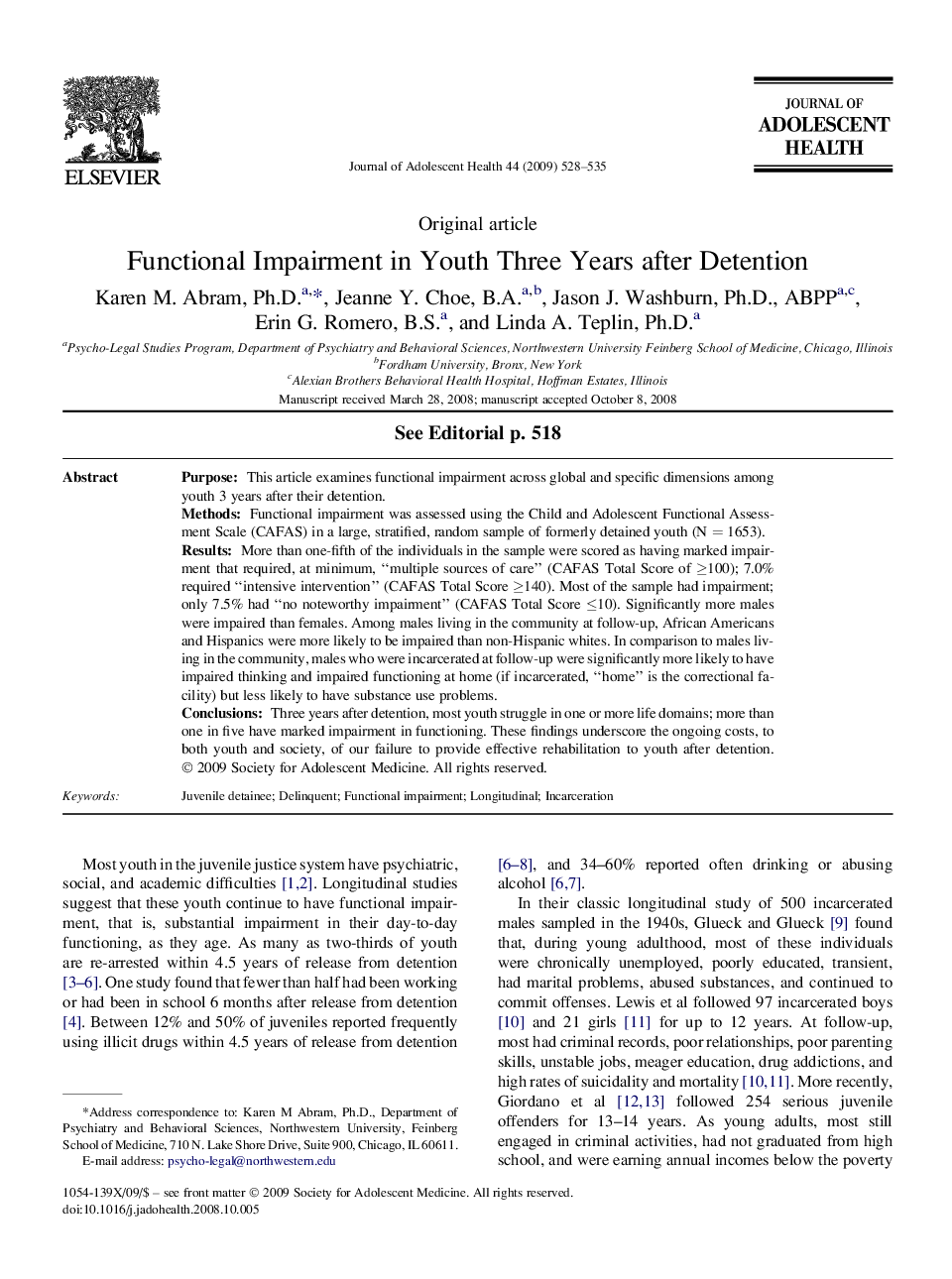| Article ID | Journal | Published Year | Pages | File Type |
|---|---|---|---|---|
| 1080234 | Journal of Adolescent Health | 2009 | 8 Pages |
PurposeThis article examines functional impairment across global and specific dimensions among youth 3 years after their detention.MethodsFunctional impairment was assessed using the Child and Adolescent Functional Assessment Scale (CAFAS) in a large, stratified, random sample of formerly detained youth (N = 1653).ResultsMore than one-fifth of the individuals in the sample were scored as having marked impairment that required, at minimum, “multiple sources of care” (CAFAS Total Score of ≥100); 7.0% required “intensive intervention” (CAFAS Total Score ≥140). Most of the sample had impairment; only 7.5% had “no noteworthy impairment” (CAFAS Total Score ≤10). Significantly more males were impaired than females. Among males living in the community at follow-up, African Americans and Hispanics were more likely to be impaired than non-Hispanic whites. In comparison to males living in the community, males who were incarcerated at follow-up were significantly more likely to have impaired thinking and impaired functioning at home (if incarcerated, “home” is the correctional facility) but less likely to have substance use problems.ConclusionsThree years after detention, most youth struggle in one or more life domains; more than one in five have marked impairment in functioning. These findings underscore the ongoing costs, to both youth and society, of our failure to provide effective rehabilitation to youth after detention.
